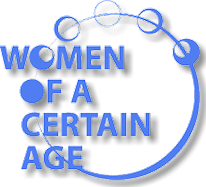
My Take On...
Food - Can It Be Medicinal?
by Sandy LaForge 2001 (revised 2006)
Food can indeed be defined as medicine. We notice that when we eat a certain food, we feel differently (think chocolate). If we become proactive and choose to eat certain foods for the benefits, then we can definitely say it is medicine.
In this section of the web site, I will be sharing with you my exploration of biological research, looking for what is new, especially in the area of breast cancer.
First, something about scientific research. Research never gives firm answers, only trends, and sometimes the results are contradictory. Research has to isolate a part of the total picture in order to observe it. It can only look at the whole picture by then reassembling some of the parts. So all research should be taken with some skepticism, due to its very nature.
I personally can’t wait the many years it takes to do good research for better answers. I will never have complete information, so I take what I have and make my choices. The question is, what are the risks versus the benefits.
The American Cancer Society echoes our mothers, saying, “Eat your vegetables.” But what does this do for us? I have been researching broccoli, brussels sprouts, cabbage, kale, rutabaga, cauliflower, turnips, bok choy, chard, and collard greens. These vegetables are all in the same biological family, called cruciferous vegetables. They contain many chemical compounds that of course our bodies need. One in particular has been receiving lots of attention recently in biochemistry laboratories, called indole-3-carbinol. Here’s what I have found.
There is much evidence that indole-3-carbinol, or I3C, inhibits cancer in the breast, as well as the liver, lungs, colon, and rectum. Many cancers are a result of exposure to pesticides and environmental toxins. I3C protects the body from these exposures. If a tumor has started, I3C makes it shrink. It also is helpful with fibromyalgia, PMS, cervical dysplasias, genital warts, and warts that grow on the vocal chords.
I3C works several ways in the body. Estrogen makes some breast cancers grow. I3C works as an anti-estrogen so it prevents breast cancer. It breaks down in the stomach acid into several other compounds. These compounds decrease the proportion of the type of estrogen that causes breast cancer, while increasing the proportion of the estrogen that is not carcinogenic. By the way, vigorous exercise also promotes the production of the “good” estrogen.
I3C also works with the breast cancer drug tamoxifen. This combination for a woman living with breast cancer (like me) is better at reducing tumors than either substance alone.
I3C also works independently of estrogen, which means it is good for a woman with breast cancer whose tumor is estrogen-negative. I3C interferes with one of the stages of cell division, and this is what cancer is–cells dividing and growing wildly, when and where they should not. I3C halts cell division in fast growing cells without killing the normal cells.
The vegetables you eat need the acid environment provided by your digestive enzymes to break down the I3C. So it is better not to take an antacid with your meal if you take an I3C supplement. Talk to your health provider about the best I3C formula.
Research will take years to tease out all the mechanisms and
interactions, but there is enough evidence now to know that
I3C prevents cancer and slows its spread. Probably the best decision is to eat as much of this family of vegetables as you can and as often as possible, and add a supplement to be sure. As with practically everything,
do not take these supplements if you are pregnant or nursing, as no studies have been done.
If you have questions, talk with Dr. Hennessy about I3C, or come to the office to read the research articles she has collected.
“Use of foods and dietary supplements presents a safe chemo-preventive strategy,” a statement by researchers from the National Cancer Institute at the symposium “Diet, Natural Products and Cancer Prevention,” published in the February 2000 issue of the Journal of Nutrition.
© Copyright 2013 - 2018 by Pat Hennessy MD MPH Design by Victoria Young Maciulski